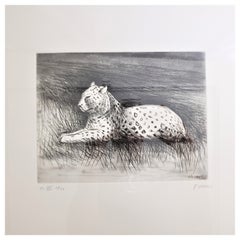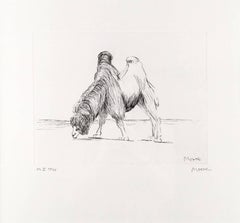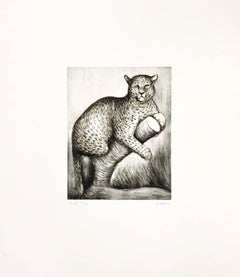Henry Moore Zoo
Late 20th Century English Mid-Century Modern Prints
Paper
1980s Realist Animal Prints
Etching
Recent Sales
1980s Modern Animal Prints
Etching
1980s Modern Animal Prints
Etching
People Also Browsed
2010s South African Minimalist Night Stands
Wood
1960s Surrealist Abstract Prints
Etching
1950s Modern Figurative Prints
Lithograph, Stencil
2010s French Art Deco Table Lamps
Marble, Metal
2010s Contemporary Figurative Sculptures
Enamel
Antique Late 19th Century European Moorish Architectural Elements
Wrought Iron
1920s Surrealist Abstract Prints
Lithograph
Vintage 1960s French Mid-Century Modern Prints
Glass, Wood, Paper
2010s South African Minimalist Pedestals
Lacquer
Vintage 1980s Paintings
Canvas, Acrylic
1990s Side Tables
Bronze
20th Century Mid-Century Modern Beds and Bed Frames
Brass
Vintage 1950s American Hollywood Regency Table Lamps
Plaster, Wood
Vintage 1920s American Art Deco Cabinets
Glass, Oak
Mid-20th Century Mid-Century Modern Beds and Bed Frames
Walnut
Mid-20th Century Mid-Century Modern Bedroom Sets
Walnut
Henry Moore for sale on 1stDibs
Henry Spencer Moore OM CH FBA was an English artist. He is best known for his semi-abstract monumental bronze sculptures, which are located around the world as public works of art. As well as sculpture, Moore produced many drawings, including a series depicting Londoners sheltering from the Blitz during the Second World War, along with other prints and graphic works on paper.
His forms are usually abstractions of the human figure, typically depicting mother-and-child or reclining figures. Moore's works are usually suggestive of the female body, apart from a phase in the 1950s when he sculpted family groups. His forms are generally pierced or contain hollow spaces. Many interpreters liken the undulating form of his reclining figures to the landscape and hills of his Yorkshire birthplace.
Moore became well known through his carved marble and larger-scale abstract cast bronze sculptures, and was instrumental in introducing a particular form of modernism to the United Kingdom. His ability in later life to fulfil large-scale commissions made him exceptionally wealthy. Despite this, he lived frugally; most of the money he earned went toward endowing the Henry Moore Foundation, which continues to support education and promotion of the arts.
Find original Henry Moore art on 1stDibs.



